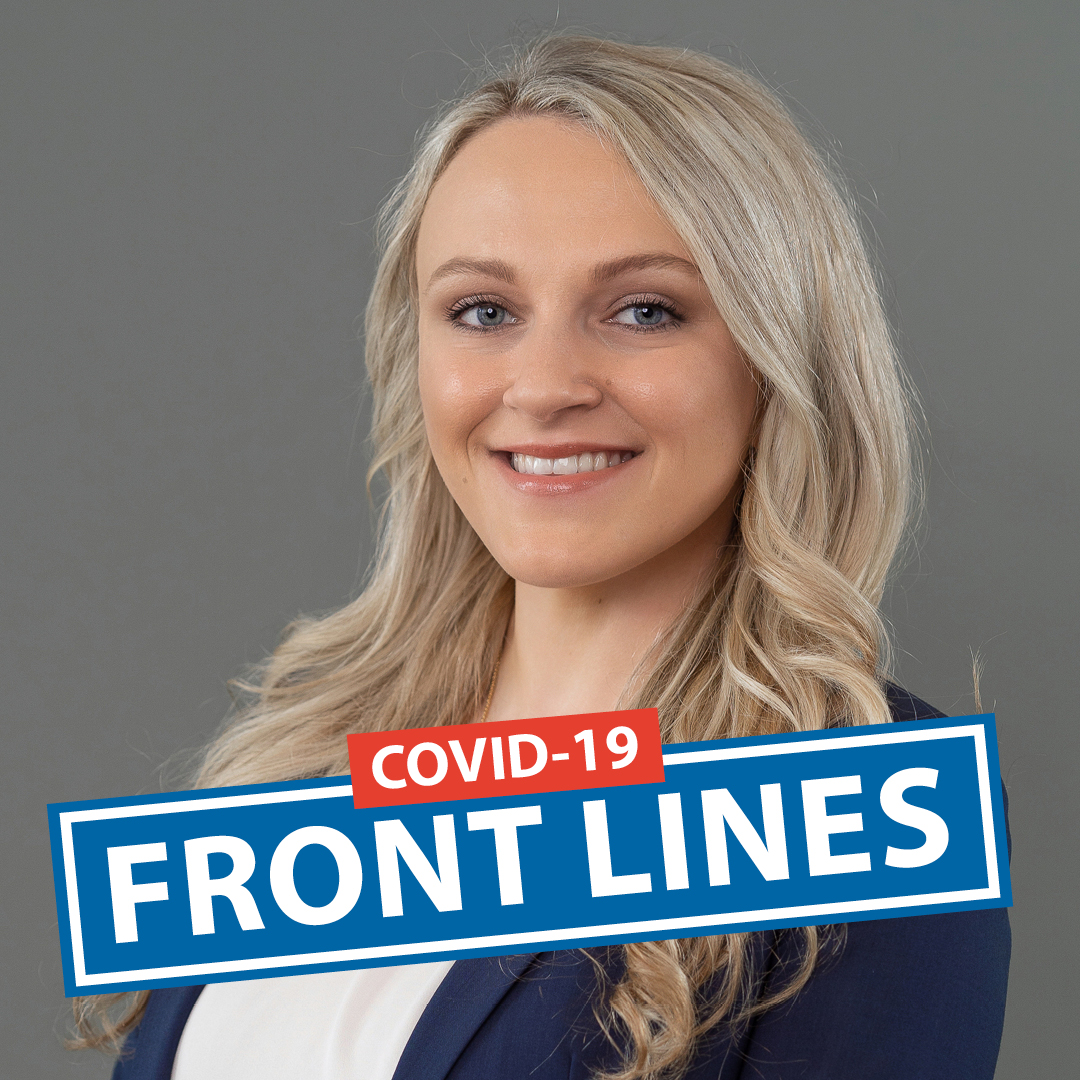 Meet Laura Arnett, a nurse practitioner at Adena Health System who has both worked with patients suffering from COVID-19 and dealt with being infected herself. She has experienced self-quarantining in the basement of her home away from her family for a time and the frustration of being unable to respond when her baby was crying while pregnant with she and her husband’s second child. Despite her best efforts, her husband, baby and mother-in-law, Valerie – who ended up having to be hospitalized -- contracted the virus.
Meet Laura Arnett, a nurse practitioner at Adena Health System who has both worked with patients suffering from COVID-19 and dealt with being infected herself. She has experienced self-quarantining in the basement of her home away from her family for a time and the frustration of being unable to respond when her baby was crying while pregnant with she and her husband’s second child. Despite her best efforts, her husband, baby and mother-in-law, Valerie – who ended up having to be hospitalized -- contracted the virus.
Here, she and Valerie share some of their thoughts -- both from the front lines and as those who have battled the virus -- for members of the community to consider when deciding whether to mask, social distance, practice vigorous handwashing and avoid large gatherings.
On being infected and trying to protect her family:
“I quarantined away from my husband and baby and they still caught it a few days later. I’m pregnant and my symptoms included dizziness, shortness of breath, fever, chills, body aches, sore throat, cough, loss of taste and loss of smell. I still can only smell at random times three months out now, and I regained my taste a month and a half after having COVID. Even after my 10 days of quarantine, I was still short of breath and dizzy intermittently for a couple weeks after. We tried and tried and tried to avoid (contracting the virus), especially when I was in my first trimester, but couldn’t.”
On the toll hospitalization can take on family members:
“I think the biggest thing that people need to remember is if their family member’s in the hospital, they won’t be able to be there with them. Think about the toll that’s going to take on the family member trying to heal and the toll it’s going to take on the family as well. A lot of these patients can’t handle being away from family.”
Valerie on being in the hospital without family:
“It’s very difficult. You can talk to them on the phone, but it’s not the same. We had to double up beds because they were so crowded (during one of the significant patient surges) and they split the room. My first thought – I’m a very non-social person – was ‘Oh, no!’, but I found myself needing that human contact and having someone else in the room, even though they were sick, too, it was kind of comforting just having someone there. … You think about a lot of things – your priorities and how you want to handle things. It’s really scary and you don’t know if you’re going to die, you really don’t.”
On any similarities to the flu:
“I worked ER for five years before I went to what I’m doing now and this is not the flu. I think it’s hard for people to see that because COVID is so much more contagious – they see just how easily it can transmit without people being symptomatic. Also, people do not realize the long-term effects COVID has on the body in comparison to the flu. It is much different in that sense, in addition to how much more contagious it is.”
On some of the frustrations in offering treatment:
“You try to hold up the morale as best as you can, but you have so many people who don’t take it seriously still. Then, to come in (to work), it’s hard to juggle that.”
On how people should approach stopping the spread:
“I think my biggest thing is people still need to wear a mask, they still need to care about one another, care about your neighbor.”
You can find more stories from the frontlines by visiting Adena’s healthcare heroes page
